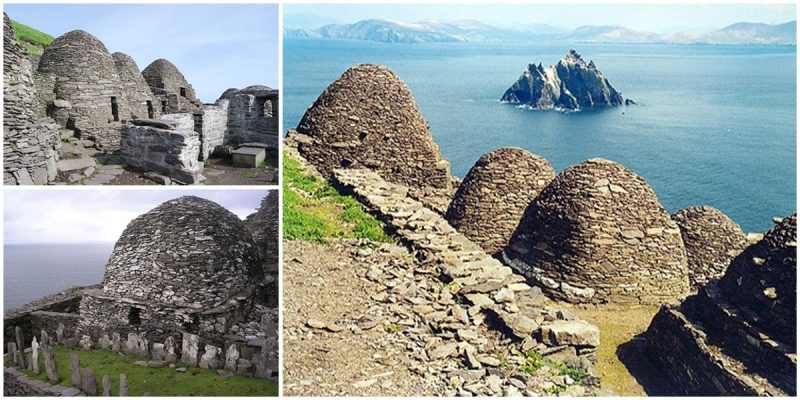The Skellig Rocks, Skellig Michael (also known as Great Skellig) and Little Skellig, are towering sea crags rising from the Atlantic Ocean almost 12 kilometers west of the Ivereagh Peninsula in County Kerry.
The larger of the two Skellig Islands, Skellig Michael, is home to something quite unique – a remarkably well-preserved sixth-century monastery that illustrates the very spartan existence of the first Irish Christians.
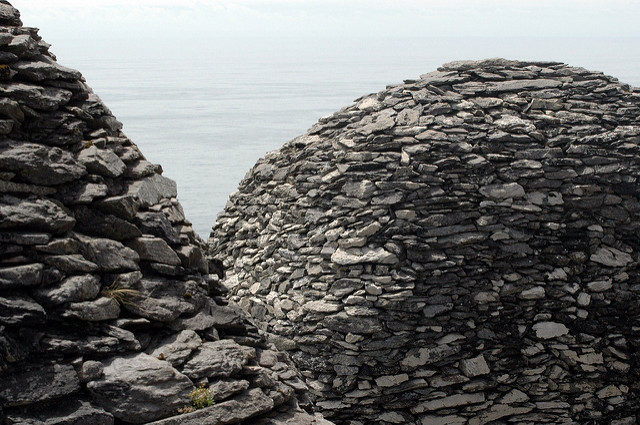
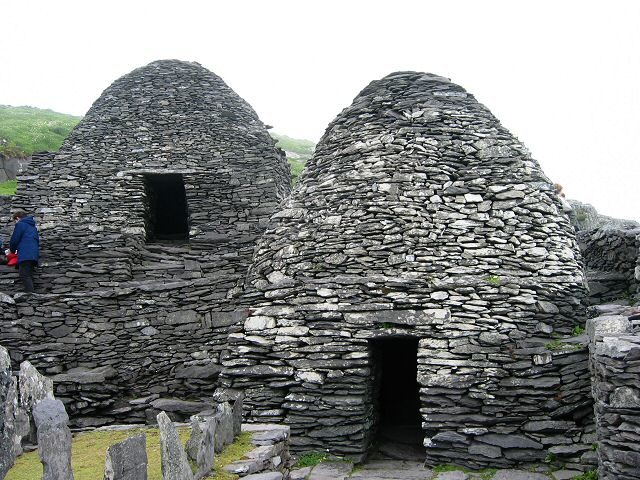
A group of determined Irish Christians established this monastic outpost on the island that remains largely intact 1,400 years later.
Using stones, the monks built hundreds of stairs leading up to Skellig Michael’s summit, where they erected six beehive-shaped stone huts, two oratories, a number of stone crosses and slabs, and a small chapel.
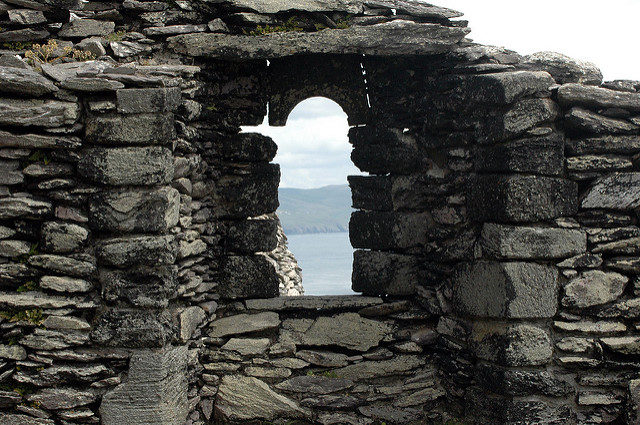
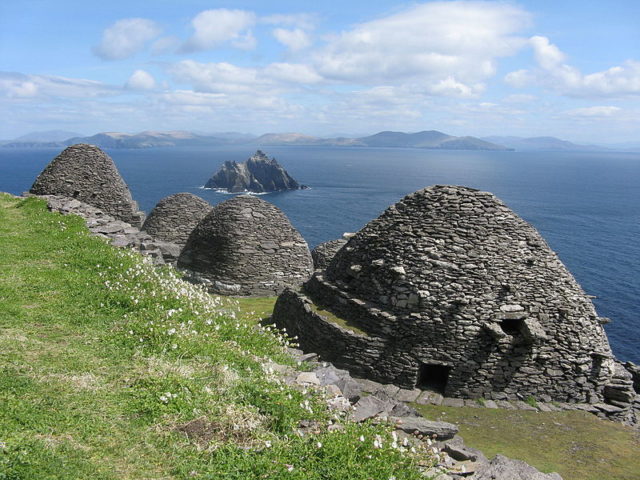
It has been estimated that no more than twelve monks and an abbot lived here at any one time. These monks led simple lives and lived in stone, beehive shaped huts, called clochans.
These huts, which were round on the outside and rectangular on the inside, were carefully built so that no drop of rain ever entered between the stones.
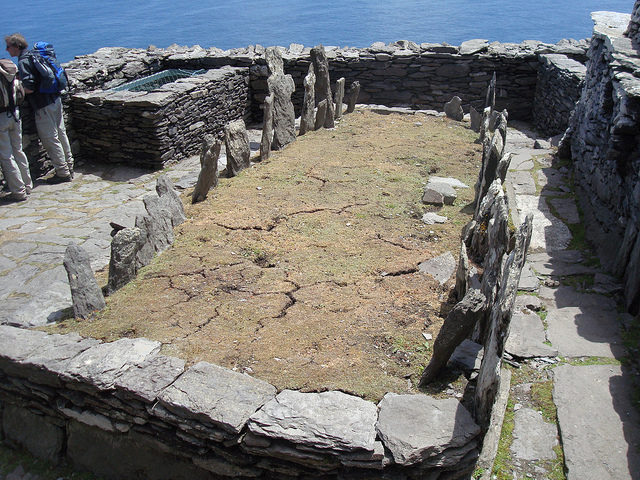
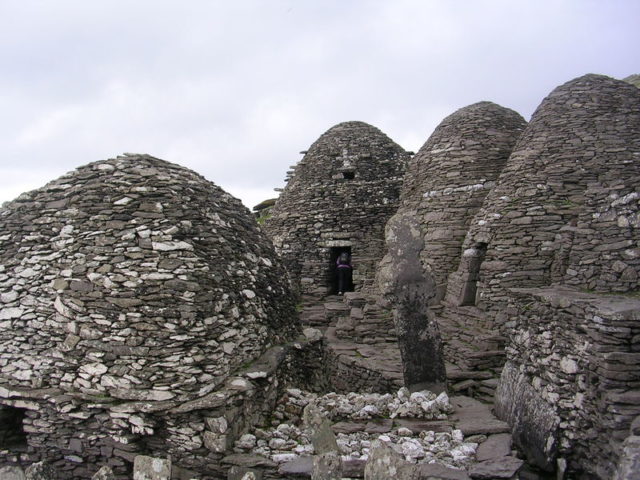
The monks used a system of retaining walls to make level terraces upon which they constructed their buildings within the inner enclosure.
The lower terracing within the outer enclosure provided garden areas for cultivation.
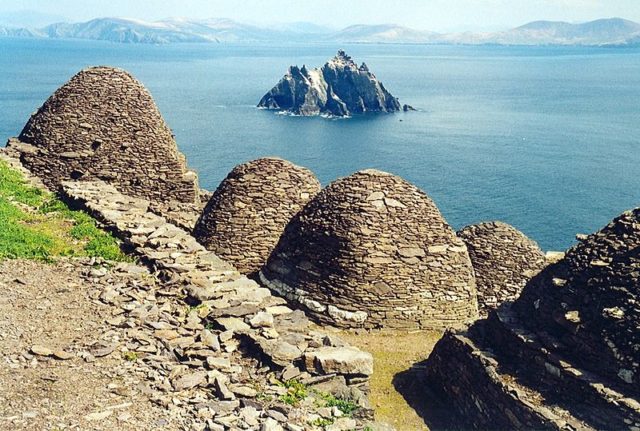
The most important building in the working monastery is the Large Oratory, a traditional inverted boat-shaped oratory with a wide west doorway and a small rectangular window in the east wall.
The monks’ graveyard is located to the east of the Large Oratory. The series of crosses are roughly shaped and some have plain incised decoration.
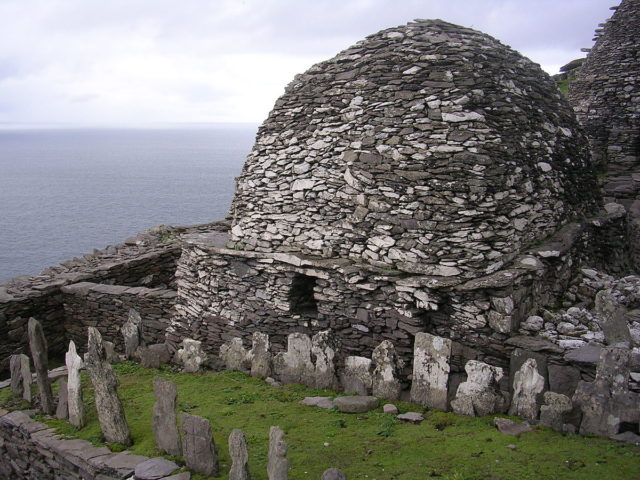
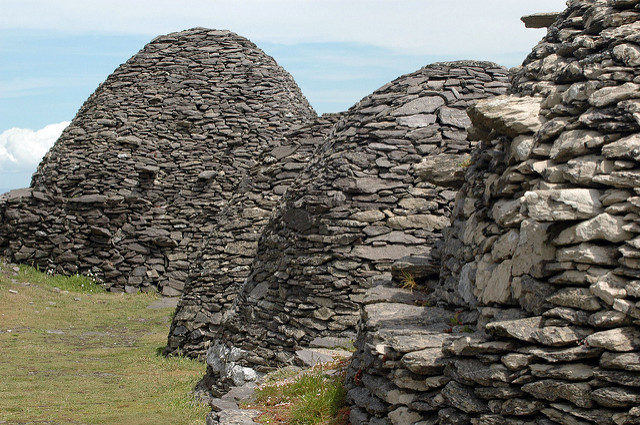
The monastery remained continuously occupied until it was abandoned in the late 12th century.
Even as late as the 18th and 19th centuries, already long abandoned and in ruins, Skellig continued to occupy a quasi-mythical reputation.
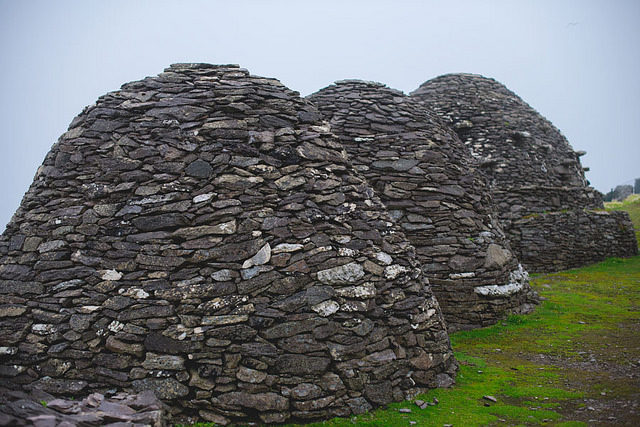
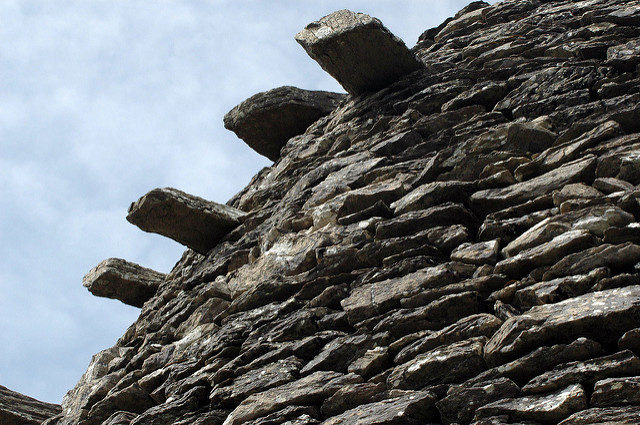
In 1996, UNESCO inscribed the island of Skellig Michael onto the World Heritage List in recognition of its outstanding universal value.
